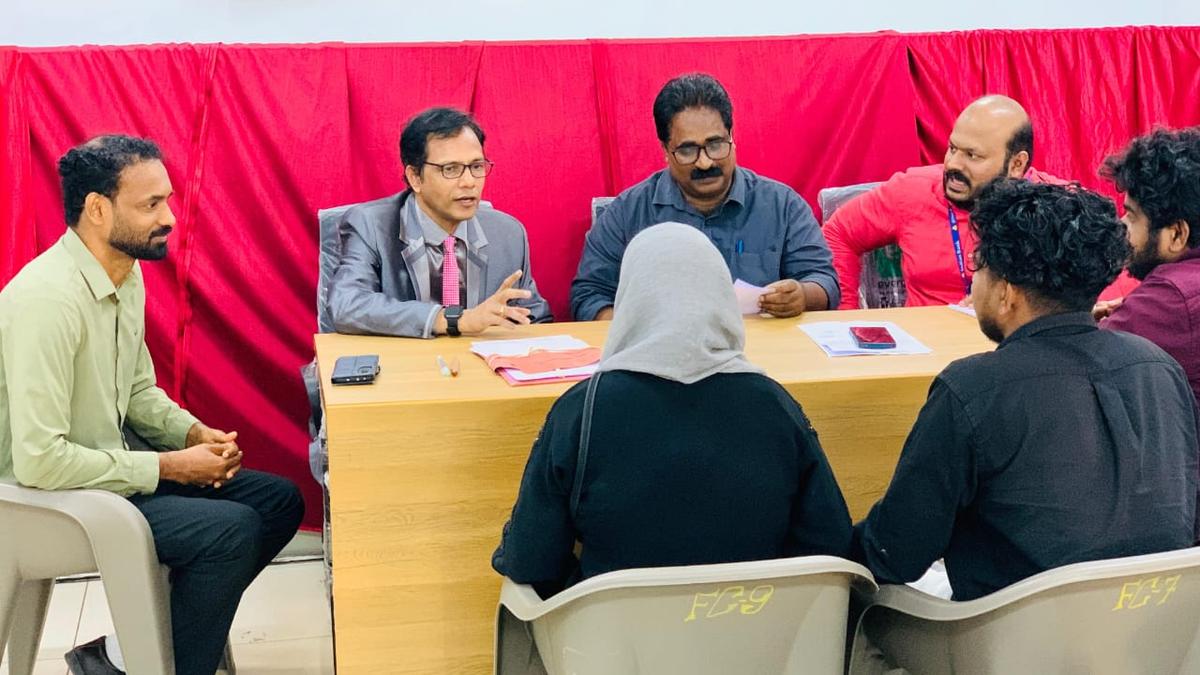Back-channel parleys are taking place with the leaders of nomadic and semi-nomadic castes to convince them to withdraw their protest, which began after the State government decided to alter the recommendations of the one-man commission headed by retired judge H.N. Nagamohan Das on internal reservation quotas.
While the commission had given a 1% reservation to Category A, comprising 59 castes, including 49 microscopic castes, and a population of approximately 5 lakh, the State government scrapped the category and merged it with the relatively well-off Korma, Korcha, Lambani, and Bhovi castes, drawing the ire of activists.
Since then, leaders of nomadic and semi-nomadic castes have been sitting in protest at Freedom Park here, even as Dalit Cabinet Ministers hold talks to end the protest, which began on August 19 — the day the Cabinet decided to modify the commission’s recommendations. The community leaders decided to continue their protest until a 1% reservation is provided.
“We have decided to continue with the protest until our demands are met. Korcha and Korma communities should also be removed from the nomadic and semi-nomadic cell. These demands are long pending,” said Basavaraj Kowthal, the convenor of Federation for Social Justice for Scheduled Castes, which is staging the protest.
Those in the know of developments say that, besides the Ministers convening meetings, the government is mulling over a comprehensive special package for the microscopic communities, which would include financial assistance, employment opportunities, special schools, housing, and the provision of land, among other benefits. These are expected to be announced by the government over the next few weeks.
However, the activists are adamant about the 1% reservation provided based on backwardness — a key criterion laid down by the Supreme Court. The government’s decision has also drawn flak as a ‘political decision’ to include the touchable castes among the Scheduled Castes — Lambani, Bhovi, Korma, and Korcha — and is being termed as competition among unequals.
Many of the castes whose population is in double and triple digits have not had any representation in public employment or have been beneficiaries of reservations in education. Their political representation has been limited, and they have remained socially, economically, and educationally backwards.
Another suggestion that has been presented to the government is to increase the reservation for the Scheduled Castes to 18% from the current 17%, which would be commensurate with their population and allocate 1% to nomadic and semi-nomadic castes.
Increasing the quota for SCs is learnt to have been a suggestion given by Mr. Das when he submitted the report to increase the reservation quota for scheduled castes from 15% to 17% and scheduled Tribes from 3% to 7%, which was accepted by the government.
However, Mr. Kowthal felt that this would be a long-drawn process and could be accomplished after the establishment of a permanent commission for Scheduled Castes, as announced by the Chief Minister Siddaramaiah.
“They miss out on government benefits or permanent employment due to the nomadic nature of moving from place to place. The merging of ‘most backward’ castes with ‘less backward’ castes has been unfair. Supreme Court judgement speaks of competition between equals, but this government has set up competition between unequals,” said R.V. Chandrashekar, research assistant at National Law School of India University, with research experience on nomadic communities.
Experts are concerned about the threat of legal intervention on the internal reservation approved, as they believe that the government’s decision contradicts the principles of backwardness established by the court. The confusion over how internal reservation will be implemented for Adi Karnataka, Adi Dravida and Adi Andhra has not been set right adding to the problem, Mr. Chandrashekhar pointed out.



.png)
.png)
.png)
















 2 hours ago
4
2 hours ago
4









 English (US) ·
English (US) ·